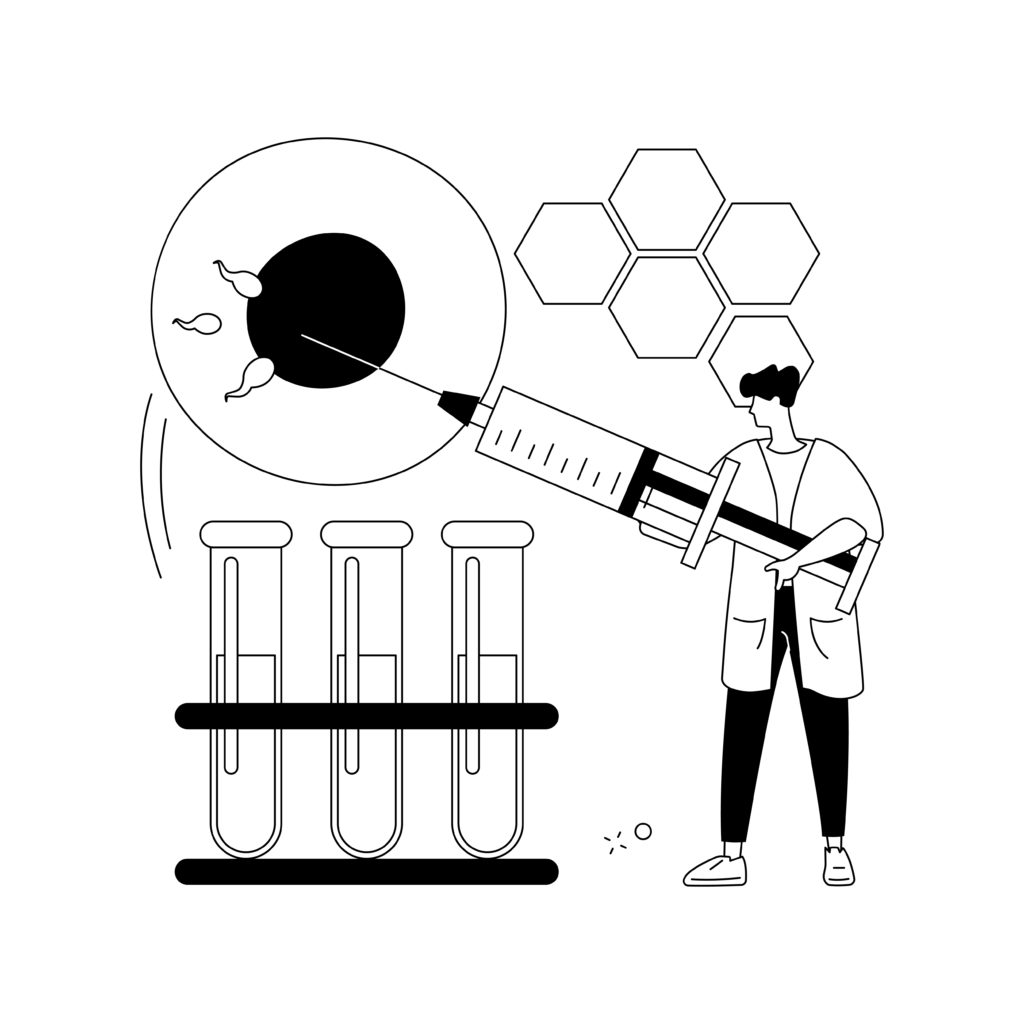Mastering Male Fertility: The Importance of Sperm Freezing


In the realm of reproductive health, the focus on fertility often tends to lean towards female factors. However, modern advancements have paved the way for men to actively participate in family planning and fertility preservation through techniques such as sperm freezing. This article delves into the importance of mastering male fertility through the practice of sperm freezing.
What is sperm freezing, and how does it work?
Sperm freezing, scientifically known as sperm cryopreservation, is a method used to preserve and store sperm cells at extremely low temperatures. This process allows individuals to store their sperm for an extended period, maintaining its viability for potential future use in assisted reproductive technologies. Here’s an overview of how sperm freezing works:
- Semen Collection: The process begins with the collection of a semen sample. This sample is typically obtained through masturbation into a sterile cup. In some cases, sperm can also be collected surgically from the testicles or epididymis.
- Semen Analysis: The collected semen is then analyzed to assess the quality and quantity of sperm. This analysis helps determine the suitability of the sample for freezing and provides a baseline for future comparisons.
- Semen Processing: Once collected, the semen undergoes processing to remove the seminal fluid. The goal is to concentrate the sperm, as the freezing process is more effective when sperm are in a more concentrated form.
- Cryoprotectant Addition: To protect the sperm cells during freezing, a cryoprotectant solution is added to the concentrated semen. This solution prevents ice crystal formation within the cells, which could otherwise damage the sperm.
- Freezing: The treated semen is then frozen using a controlled-rate freezing process. The temperature is lowered gradually to prevent the formation of ice crystals that could harm the sperm. The sperm is eventually stored at temperatures below -196 degrees Celsius (-321 degrees Fahrenheit) in liquid nitrogen, which halts all biological processes, including cellular aging.
- Storage: The frozen sperm is stored in specialized containers called cryogenic tanks or dewars. These tanks are designed to maintain the extremely low temperatures required for long-term storage.
- Thawing: When the individual or couple is ready to use the sperm, the frozen sample is thawed. Thawing is a carefully controlled process to minimize damage to the sperm cells. After thawing, the sperm can be used for various assisted reproductive technologies, such as in vitro fertilization (IVF) or intrauterine insemination (IUI).


Why Sperm Freezing Matters:
Individuals may opt for sperm freezing for various reasons, including preserving fertility before medical treatments like chemotherapy, radiation, or surgeries. It’s also chosen by those who want to delay parenthood, address male infertility, or safeguard against lifestyle factors that may impact fertility.
Fertility Preservation:
Sperm freezing is a proactive approach to fertility preservation, offering men the opportunity to safeguard their reproductive potential. This becomes particularly relevant in situations where individuals face the risk of infertility due to medical treatments, such as chemotherapy, radiation therapy, or surgeries that may impact sperm production.
Delayed Parenthood:
In today’s society, many individuals and couples are choosing to delay parenthood for various reasons, such as career goals or personal pursuits. Sperm freezing provides a way for men to extend their fertility window, ensuring that they can still pursue biological fatherhood later in life.
Mitigating Lifestyle Factors:
Environmental factors, stress, and lifestyle choices can influence male fertility. Sperm freezing allows men to take control of their reproductive health by preserving sperm during times of optimal fertility, providing a safety net against potential future challenges.
Addressing Male Infertility:
For those facing male infertility issues, sperm freezing can be part of a comprehensive fertility treatment plan. By preserving healthy sperm, individuals can navigate fertility treatments with greater flexibility, increasing the chances of success in assisted reproductive procedures.
Empowering Family Planning:
Sperm freezing empowers individuals and couples in family planning decisions. It provides a sense of security and control over the timing of parenthood, offering a valuable option for those who wish to align their family-building goals with their life circumstances.
How long can sperm be frozen and still be viable?
Sperm can be frozen and stored for extended periods while maintaining viability. The duration for which sperm remains viable in frozen storage depends on various factors, including the freezing and storage techniques, the quality of the original sperm sample, and the conditions of storage.
In general, sperm banks and fertility clinics typically store frozen sperm for many years. It’s not uncommon for sperm to remain viable for up to several decades when stored in liquid nitrogen at temperatures below -196 degrees Celsius (-321 degrees Fahrenheit). The freezing process essentially halts all biological activity, including cellular aging, allowing sperm to be preserved for extended periods without significant deterioration.
It’s important to note that while long-term storage is possible, the overall quality of the sperm sample before freezing can impact the success of fertility treatments. A thorough assessment of sperm quality and consultation with fertility specialists are crucial steps to ensure the best possible outcomes when using frozen sperm for reproductive purposes.
Does sperm freezing guarantee future fertility success?
While sperm freezing significantly improves the chances of successful fertility treatments, it doesn’t guarantee pregnancy. Success depends on various factors, including the quality of the sperm, the woman’s reproductive health, and the chosen assisted reproductive technologies.
What is the process for thawing frozen sperm?
Thawing frozen sperm involves gradually warming the sample to room temperature. This process needs to be carefully managed to maintain the sperm’s viability. Once thawed, the sperm can be used for procedures like in vitro fertilization (IVF) or intrauterine insemination (IUI).
Can sperm freezing be done at home?
Sperm freezing is a complex procedure that should be performed in a controlled environment, typically by fertility specialists in a clinic or sperm bank. Attempting to freeze sperm at home may compromise the quality of the sample and reduce the chances of successful future use.
Is sperm freezing covered by insurance?
Insurance coverage for sperm freezing varies and is often dependent on the reason for the procedure. Some insurance plans may cover fertility preservation in the context of medical treatments, while others may not cover it for elective purposes. It’s advisable to check with the insurance provider for specific details.
Are there any risks or side effects associated with sperm freezing?
Sperm freezing, or sperm cryopreservation, is a widely accepted and safe technique with minimal risks. While the process of collecting a sperm sample may cause mild discomfort for some individuals, it is generally well-tolerated. Advances in cryopreservation methods have reduced the likelihood of damage to sperm cells during freezing and thawing, ensuring a high post-thaw viability. Emotional considerations, such as stress or anxiety, may arise due to concerns about fertility, medical treatments impacting fertility, or decisions related to family planning. Additionally, individuals should be aware of the associated costs, including initial consultation, collection, and storage fees. It is recommended that those considering sperm freezing engage in open communication with healthcare providers to address any concerns and make informed decisions based on their unique health, medical history, and circumstances.
How much does sperm freezing cost in Turkey?
The cost of sperm freezing in Turkey can vary depending on several factors, including the specific clinic or fertility center, the services included in the package, and any additional procedures or tests that may be required.
Below is a table outlining the average cost of sperm freezing in three different countries – Turkey, the United Kingdom, and the United States.
| Country | Cost Range |
|---|---|
| Turkey | €500 – €800 |
| UK | £600 – £2000 |
| USA | $1,000 – $3,000 |
Conclusion
Mastering male fertility involves recognizing the importance of proactive measures such as sperm freezing. In a landscape where reproductive choices are expanding, this technique provides men with a powerful tool to take charge of their reproductive futures. Whether facing medical treatments, lifestyle challenges, or simply choosing to delay parenthood, sperm freezing emerges as a crucial component in the journey toward building a family on one’s terms. As technology continues to advance, the significance of sperm freezing in the realm of reproductive health is only set to grow, contributing to a more inclusive and holistic approach to family planning.
If you have any questions or need more information about sperm freezing or any other topics, feel free to reach out to us.



